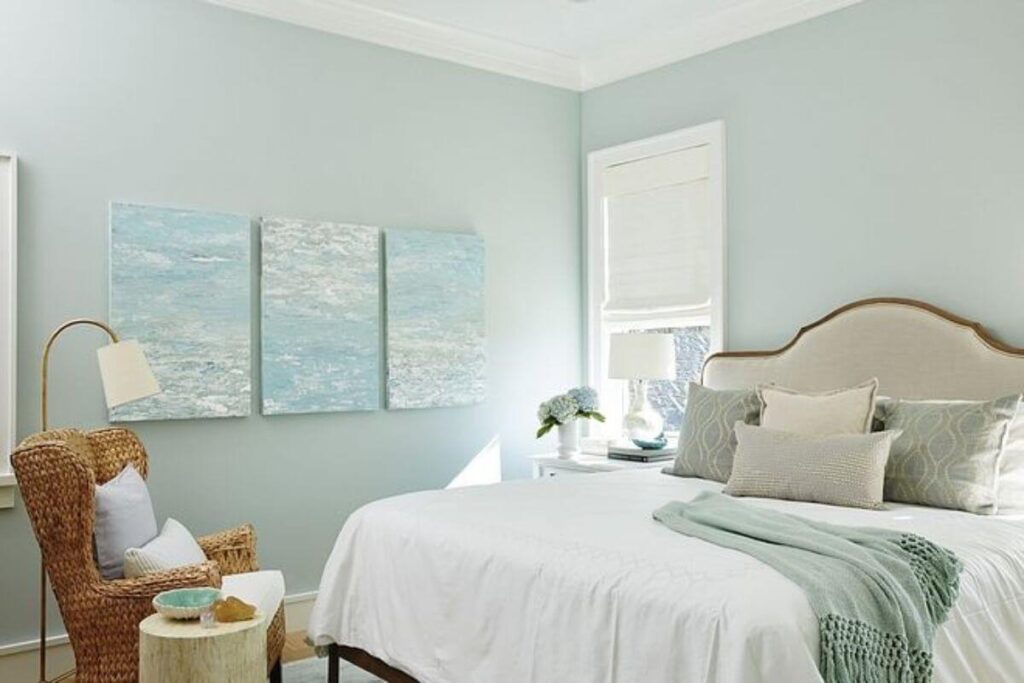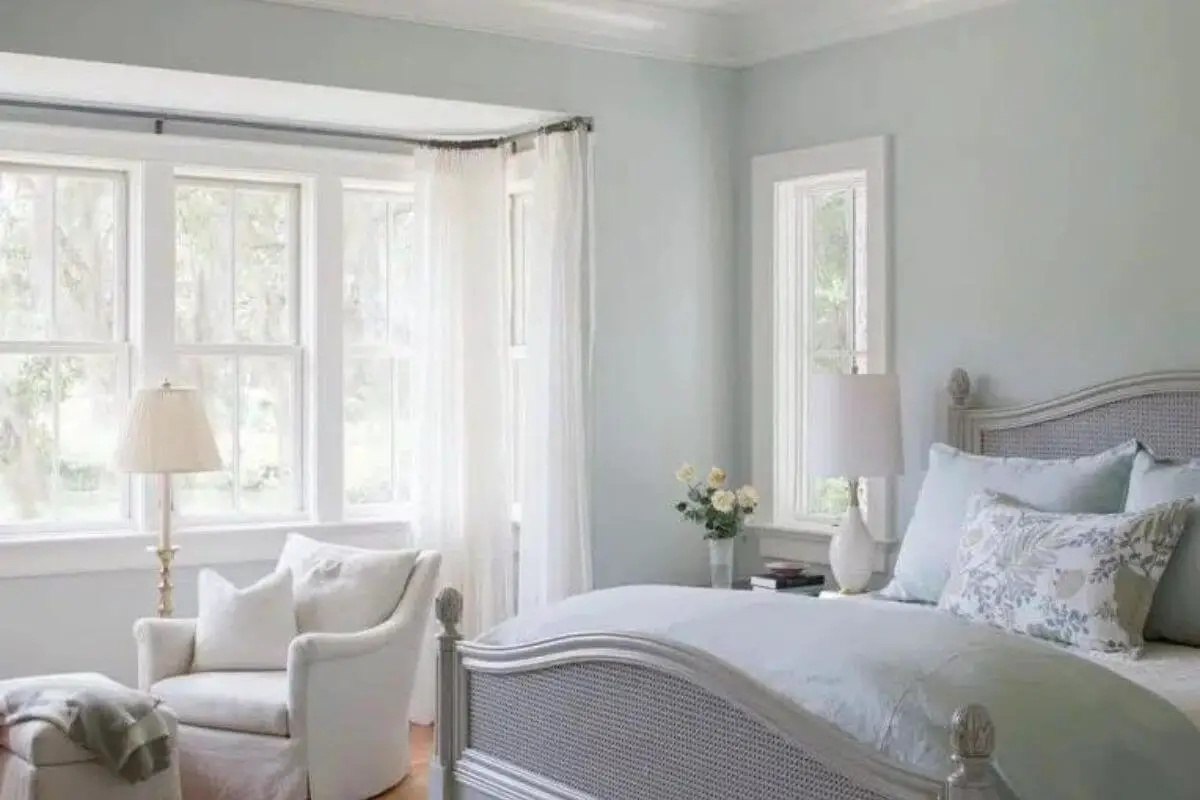When it comes to painting your interior space, selecting the right color can set the tone and mood for the entire room. Two popular choices known for their calming and tranquil qualities are Liveable Green and Sea Salt. These serene shades can transform any space into a peaceful retreat. In this article, we’ll explore the differences between Liveable Green and Sea Salt to help you make an informed decision for your interior design project.
Liveable Green: A Refreshing Oasis
Characteristics of Liveable Green
Liveable Green is a soft, muted green hue that brings the tranquility of nature indoors. It embodies the essence of lush greenery and is often associated with rejuvenation and relaxation. This color can create a sense of balance and harmony in your living spaces.
Advantages of Liveable Green
- Calming Effect: Liveable Green has a calming and soothing quality, making it an excellent choice for bedrooms, living rooms, and other areas where relaxation is desired.
- Versatility: It pairs well with a variety of decor styles, from modern to traditional, and complements both neutral and vibrant accents.
- Connection to Nature: Liveable Green brings a touch of the outdoors inside, making it a popular choice for those seeking to create a harmonious living environment.
Sea Salt: Coastal Elegance
Characteristics of Sea Salt
Sea Salt is a gentle, pale blue-green color that evokes the serenity of coastal living. It combines the tranquility of blue with the freshness of green, creating a unique and timeless shade. Sea Salt is known for its ability to enhance the airy and relaxed feel of a space.
Advantages of Sea Salt
- Relaxing Atmosphere: Sea Salt promotes a sense of calm and relaxation, making it suitable for bedrooms, bathrooms, and spaces where you want to unwind.
- Timeless Appeal: This color has a timeless quality that can adapt to various design styles, including coastal, farmhouse, and Scandinavian.
- Reflects Light: Sea Salt has a light-reflective quality that can brighten up a room, making it appear larger and more inviting.
Liveable Green vs. Sea Salt: Key Differences
Let’s compare these two tranquil interior paint colors based on their primary differences:
1. Color Tone
- Liveable Green: A soft, muted green with earthy undertones.
- Sea Salt: A pale blue-green with coastal and airy undertones.

2. Mood and Ambiance
- Liveable Green: Creates a calm and balanced atmosphere with a connection to nature.
- Sea Salt: Evokes a coastal and breezy ambiance, perfect for a beachy or relaxed setting.
3. Versatility
- Both: Both colors are versatile and can be used in a variety of design styles.
4. Lighting
- Consideration: The choice between Liveable Green and Sea Salt may depend on the lighting conditions in your space and the mood you want to create.
Conclusion
In the decision between Liveable Green and Sea Salt for your interior paint color, consider the atmosphere and mood you wish to establish in the room. Liveable Green offers a soothing and nature-inspired vibe, while Sea Salt brings the freshness of coastal living into your space. Both colors have a timeless appeal and can adapt to various design styles. Ultimately, the choice depends on your personal preferences and the specific aesthetic you want to achieve for your home.
FAQs
1. Which color, Liveable Green or Sea Salt, is better for a bedroom to create a relaxing atmosphere?
Both Liveable Green and Sea Salt are suitable for creating a calming atmosphere in a bedroom. The choice depends on your personal preference and whether you prefer a green or blue-green color palette.
2. Can I use Liveable Green or Sea Salt in a small room to make it feel larger?
Yes, both colors have the potential to make a small room feel larger, as they are light and airy. Sea Salt, in particular, with its light-reflective quality, can help create a sense of spaciousness.
3. Do Liveable Green and Sea Salt work well in bathrooms?
Both colors can work beautifully in bathrooms. Liveable Green can create a spa-like, natural feel, while Sea Salt can evoke a coastal and fresh atmosphere. Consider your desired bathroom ambiance when choosing between the two.
4. Are there specific color combinations that work well with Liveable Green and Sea Salt?
Both colors are versatile and can be paired with a range of complementary hues. For Liveable Green, earthy tones, neutrals, and soft yellows or blues can work well. Sea Salt pairs nicely with coastal-inspired shades, such as sandy beiges, crisp whites, and muted blues.
5. Can I use Liveable Green or Sea Salt as an accent wall, or are they better for all walls in a room?
You can use Liveable Green or Sea Salt as an accent wall to add a pop of color while keeping other walls neutral. Alternatively, you can paint all walls in a room with these colors to create a cohesive and calming environment.
6. Do these colors require specific lighting conditions to look their best?
Both Liveable Green and Sea Salt can adapt to various lighting conditions, but it’s a good idea to sample the paint in your space to see how it appears under your specific lighting. Natural light can enhance their beauty, so rooms with ample windows can showcase these colors effectively.
7. Are there variations in Liveable Green and Sea Salt from different paint brands?
Yes, different paint brands may offer variations of Liveable Green and Sea Salt, so it’s advisable to obtain paint samples and compare them in your space. The exact shade can vary slightly, depending on the brand’s formulation.
8. Can I use Liveable Green and Sea Salt in a child’s room or nursery?
Both colors can work well in a child’s room or nursery, depending on the desired ambiance. Liveable Green can create a serene and gender-neutral space, while Sea Salt can bring a calming and fresh feel to the room.
9. How do I decide between Liveable Green and Sea Salt for my interior project?
Consider your overall design goals, the mood you want to establish in the space, and your personal preferences. It may also be helpful to test paint samples in the room to see how they interact with the existing decor and lighting conditions.



